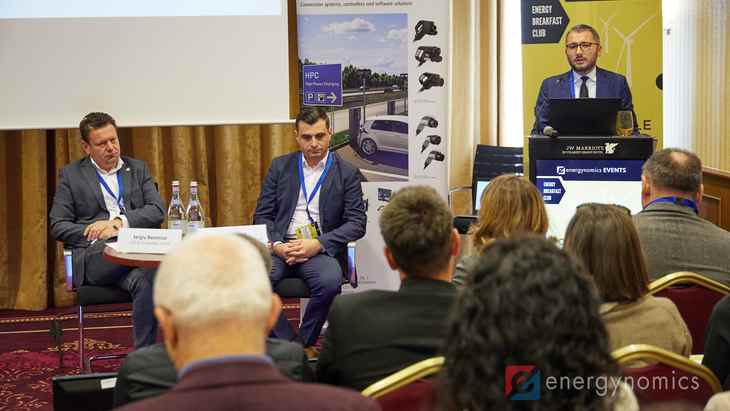The alternative to the decarbonisation of the industry is its closure, but Romania now has sufficient funds to be able to plan investments in reducing emissions. At the same time, considering the “unprecedented” level of funding available, Romania must also become a technology producer, not just a consumer, said Mihai Bălan, president of the Romanian Photovoltaic Industry Association (RPIA), during the conference “New wave of renewables”, organized by Energynomics.
“It’s clear that we can’t just be consumers of technology. To integrate into the European clean energy value chain, we must become both producers and suppliers of technology. We have this potential both at the level of financing and at the level of human resources. We just need a bit of ambition. The alternative to decarbonizing the industry is closing down the industry. There is no other solution, and the sooner we become aware and move from a conservative narrative in which we look at the (legislative – no) European packages as obligations, like three years ago, to a progressive way of thinking in which we nevertheless align ourselves more quickly to what is being discussed in Brussels and we also see the opportunities, not just the headaches that these (renewable energy – no) targets bring us, the better it will be”, said Bălan.
The process of electrification of the economy and society is inevitable and benefits from generous funding from the EU, through various programs such as ‘Fit for 55’, RePowerEU or ‘net zero emissions’. Moreover, there is a very high demand from domestic and industrial consumers for investments in energy production projects in photovoltaic panels.
In the last 7-8 years, no new energy generation capacities from non-polluting sources have been built in Romania, and until 2030, the year in which Romania has assumed the construction of at least 7,000 MW in renewable units, there are still also eight years. In order to achieve these objectives, Romania will have to draw “some long-term growth trajectories”.
The plans of all the authorities in Romania are related to the Integrated Energy and Climate Change Plan published in 2020, but in the meantime, new green energy programs and targets have been launched at the European level. For example, the European plan “Fit for 55” proposes that Romania build 8 GW of energy production projects from renewable sources, almost double the level of what Romania proposed in 2020.
DOWNLOAD THE PRESENTATION OF MIHAI BĂLAN
In addition, there is also interest in green hydrogen production, but this goal alone requires at least 10 GW of additional renewable energy by 2030. There is also an obligation to have solar panels on residential buildings by 2029, and this involves building several GW of renewable energy.
All these investments, however, also assume the existence of a commensurate workforce. In order for Romania to meet the renewable energy targets, in 2026 it will need 40,000-70,000 employees in the field of installing solar panels alone. “I think we can say that we have no chance to find these employees and there is not much time to train them. That’s why, unfortunately, the first big parks that are being built now are done with imported labor,” Bălan added.
In addition, the PV equipment manufacturing market is highly concentrated, with 95% controlled by China, so supply may be limited at some point. “It is a 95% degree of concentration, higher than that of gas sources for Europe. If we replace one dependency with another, we don’t solve much and it’s a major risk that in the coming years, as the global demand for photovoltaic panels increases, we’ll also see a supply deficit,” Bălan said.
The conference “New wave of renewables“ was organized by Energynomics with the support of our partners: ABB, BCR, Eaton Electric, EnergoBit, EnergoPower, Enevo Group, Phoenix Contact, Photomate, REI Group, Simtel, Volt, Wiren.
